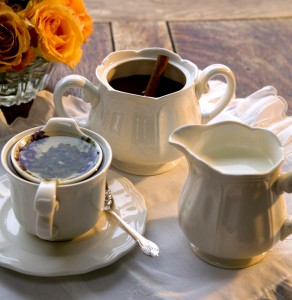I’m crazy about coffee, I won’t deny it. But there is something special abou t a hot cup of tea — something a bit subtler, something unquestionably comforting. Since it doesn’t pack the caffeine punch of coffee, tea has the power to soothe rather than rev, and there are so many tea tastes to try! Each variety of tea has its own unique healing properties. So, whether you need a simple winter warm-up or a targeted health boost, there is a tea to attend your every whim.
t a hot cup of tea — something a bit subtler, something unquestionably comforting. Since it doesn’t pack the caffeine punch of coffee, tea has the power to soothe rather than rev, and there are so many tea tastes to try! Each variety of tea has its own unique healing properties. So, whether you need a simple winter warm-up or a targeted health boost, there is a tea to attend your every whim.
Tried ‘n’ True Teas
Technically, “tea” means the dried leaves of the evergreen Camellia sinensis bush, which gives us black, oolong, green and white teas. Each is processed differently in terms of wilting and fermenting in order to achieve their unique “colored” characteristics. While herbal teas like chamomile and rose hip possess a variety of virtues, only true teas contain antioxidant compounds called catechins that have been shown to stave off heart disease, cancer, strokes and diabetes. According to The Tea Association of the USA (www.teausa.org), a University of Minnesota study found that postmenopausal women who drank 2 or more cups of tea daily had a 60 percent lower incidence of urinary tract cancers and a 32 percent lower incidence of gastrointestinal cancers. Additional studies suggest that tea may help to halt cancers of the breast, liver, pancreas, stomach and colon.
Heavenly Herbals
Herbal tea, or “tisane,” encompasses an endless spectrum of possible plant pleasures. It can be created using fresh or dried flowers, leaves, seeds, even roots. Whatever your taste, or whatever your ailment, there is an herbal tea guaranteed to please. Herbal teas are naturally caffeine free and they have been used for centuries to soothe body and soul.
When used wisely, herbal teas can safely and effectively ease the effects of stress, PMS, menopause and hormonal fluctuations. The following are three herbals that are commonly recommended for women’s health:
Raspberry leaf tea has long been used to relieve menstrual cramps and is an excellent alternative to over-the-counter NSAID drugs. It also is one of the herbals that is beneficial during pregnancy.
Black cohosh is a smooth muscle and nerve relaxant; plus, it has mild estrogen-like properties. It helps with hot flashes, headaches and bloating.
Licorice root offers estrogen-like properties, stabilizes blood sugar levels to help reduce moods swings and eases menstrual cramping.
Learn more at Aim for Herbs (www.aimforherbs.com/herandwomhea.html). Of course, when in doubt (or if you’re pregnant), consult your health care provider before choosing an herbal tea.
Quality Counts
Sure, tea bags are a dime a dozen these days, but the old adage still stands: you get what you pay for. Whether you’re looking for true tea or herbal, the connoisseurs insist that the stuff in your average tea bag isn’t worth your dime. Unlike conventional tea, which is minced into tiny pieces before bagging, quality tea suppliers like Frontier Natural Products Co-op (www.frontiercoop.com) and Mountain Rose Herbs (www.mountainroseherbs.com) offer loose-leaf varieties that are fresher, more fragrant, longer lasting, and more economical. These teas aren’t simply a mysterious green dust hiding inside a paper package. They are colorful, textured and aromatic. They’ll tantalize your senses before you even brew them!
Brewing Basics
If you’ve never brewed loose-leaf tea before, you’re in for a treat. Here’s what you do:
— Preheat your cup by immersing it in hot water so that the temperature of your tea water won’t drop so quickly and inhibit the full flavor of the tea.
— Place one rounded teaspoon of dry leaves (or flowers) in a tea strainer or infuser basket to brew a 6-ounce cup of tea. If you find you prefer a stronger brew, try using more leaves next time.
— Black tea and herbals are best prepared with water that has just come to boiling (boiling too long will flatten the flavor). Oolong, green and white teas should be prepared with hot, but not boiling, water to prevent “cooking” the leaves and damaging their flavor. A good rule of thumb: pour the water as soon as tiny bubbles begin to rise from the bottom of your kettle. If the water comes to a boil, let it cool for a couple of minutes before pouring.
— Steep for two to five minutes according to your taste, and be sure to use your tea for a second and third cup. Simply steep a bit longer each time.
— You can find a selection of tea-brewing supplies at Mountain Rose Herbs (www.mountainroseherbs.com).
Copyright 2009, MaryJane Butters.
Distributed by United Feature Syndicate, Inc.






























